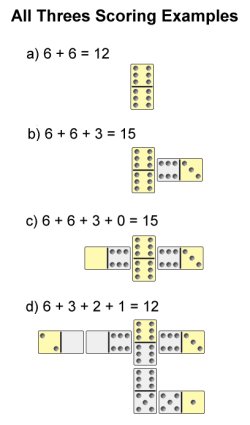I threw together the following logarithm property dominoes. I haven't had a chance to try them out yet, so I'm not sure the ratios are correct. But I figured it was a start and I don't know when I'll have the initiative or time to post them again. Here are the dominoes:
You should be able to play any domino game with these cards that you want but I planned to play the game "all threes". Here are the rules:
- Each player draws 5 dominoes. You start by playing a double domino (one end equals the same number as the other end: 2-2 for example)
- You can build off the double domino in 4 directions- above, down, left and right. To play off a domino, you must match ends that have the same value.
- Players take turns placing dominoes.
- If a player can’t place a domino, they must draw more dominoes until they can play.
- After each player places a domino, count up the total of all loose ends. If the total is a multiple of 3, the player gets that many points.
- The game ends when either a player runs out of dominoes in their hand or when a player reaches 100 points. If a player runs out of dominoes in their hand, the player with the most points wins.
Since these are logarithm expressions and not straight forward pips, players must make the conversions in their
head or on paper.
Now I just need to figure out a fun way to teach solving logarithm and exponential equations....

No comments:
Post a Comment